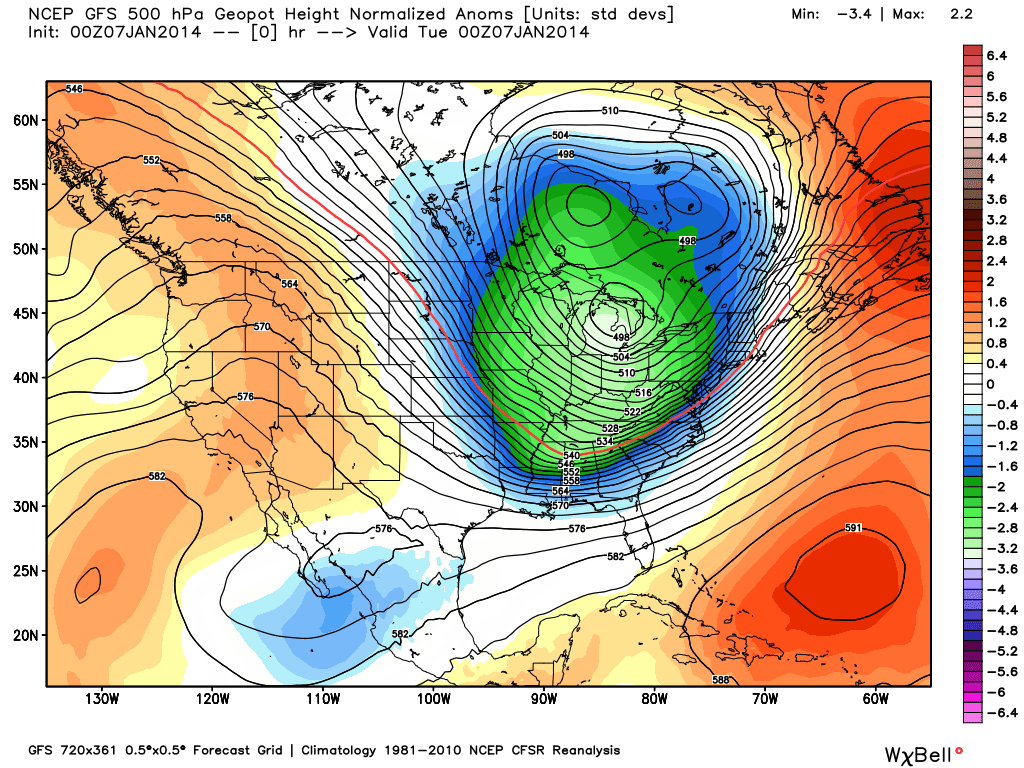This year's polar vortex as of January.
Image courtesy of WeatherBell.com
Although the effects of this year's polar vortex—which blanked much of the eastern U.S. and Canada with snow and freezing temperatures—are mostly coming to a close, the effects on bird populations may be a little longer lasting. In many areas, ice sheets covered waterbodies that diving birds traditionally use to feed on fish and other aquatic life, resulting in starvation in many cases.
While there isn't much we can do in the short term other than hold out hope, there are several things we can do to make unpredictable events like this more manageable for bird populations across the continent.
In a recent guest column for Buffalo News I discussed measures we can take to support healthy bird life both here at home and in their summer breeding grounds up north in the boreal forest—without which we would have few wintering migrants to even begin with.
Here's a snippet:
"While there is little we can do in the short term for these birds, there are long-term actions that can ensure these and other species will remain a part of our landscape. Here on the birds' wintering grounds, we need continued efforts to ensure clean waters with healthy populations of their aquatic food sources.
But these birds also need help in their summer breeding grounds – the vast boreal forest of northern Canada. Each spring, birds like white-winged scoters and red-breasted mergansers begin a journey north that takes them to pristine and isolated lakes and ponds sprinkled across Canada's boreal forest region in the millions."
You can read the full article here:
http://www.buffalonews.com/opinion/another-voice/another-voice-birds-tha...


